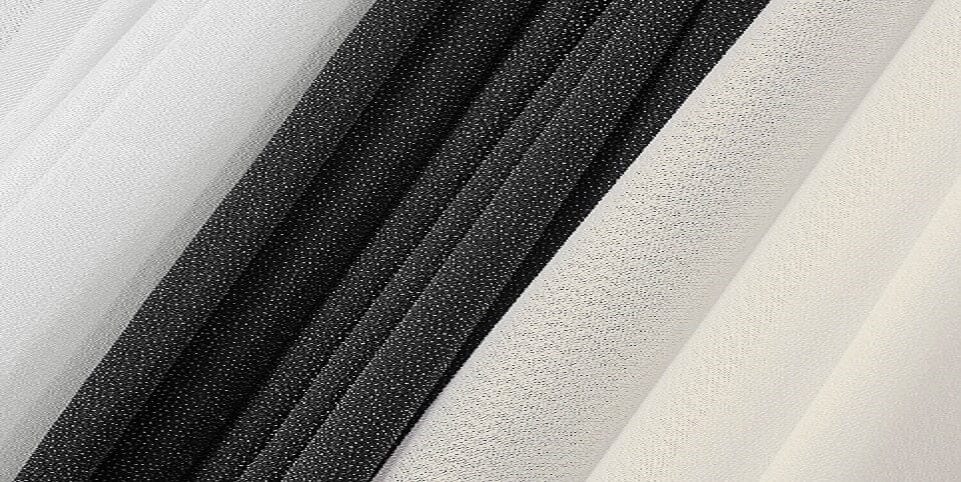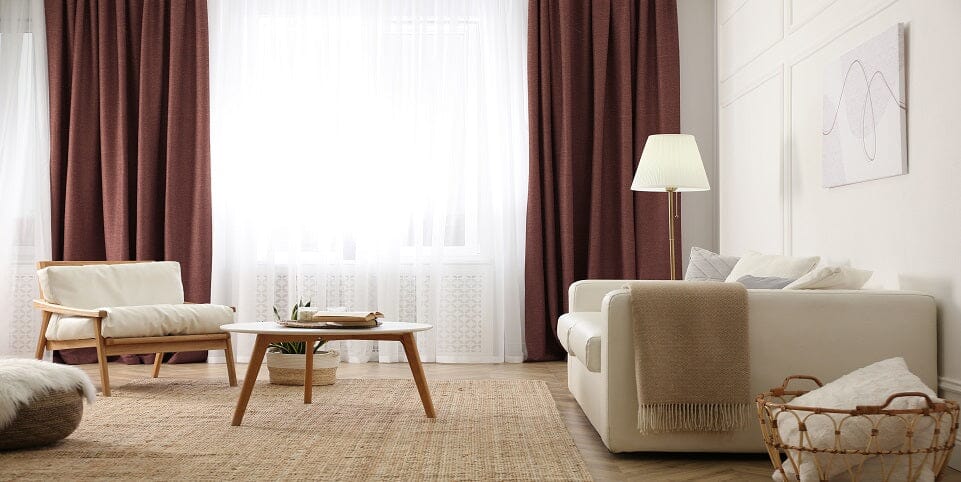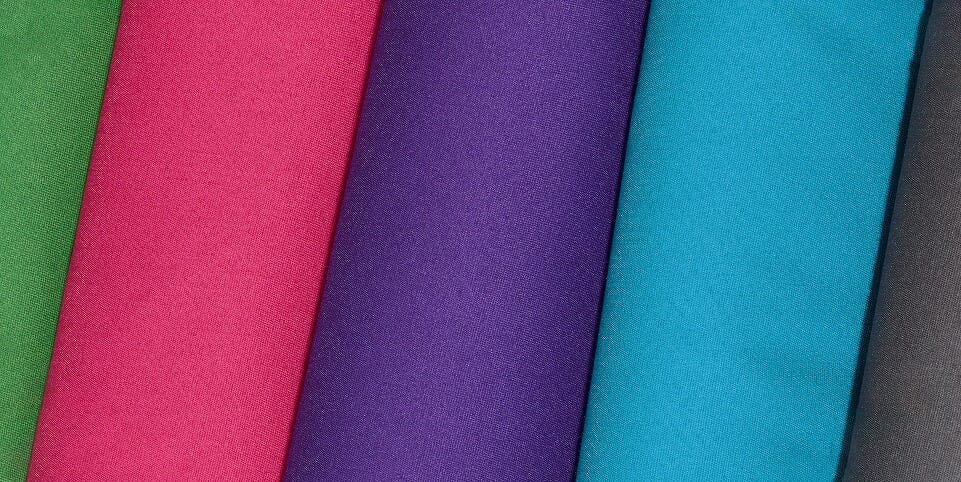Introduction
Interfacing is a type of fabric that is soft, sturdy, and used for adding body and comfort to other textiles. Depending on the application, there are different types of interfacing, each with their own unique characteristics. Interfacing is also easy to apply; depending on the type, it can be sewn in or ironed on.
Read along as we discuss all about Interfacing fabric and how to choose the best one for your next project.
What Is Interfacing Fabric?
Interfacing is a material that alters the characteristics of existing fabrics. Generally speaking, Interfacing is soft and structured. This material is added to sewing, quilting, or craft projects to add body, stability, thickness, weight, and comfort, among other characteristics.
Types Of Interfacing Fabric?
Interfacing comes in many different styles and types. Interfacing can be manufactured in various ways with different materials. Sourced or blended from various fibers, synthetically made interfacing can be more affordably priced, while naturally sourced ones are hypoallergenic.
Furthermore, these fabrics can feature an adhesive backing for easy application. Interfacings can also be woven, knit, or non-woven, in addition to having various weights. Combined with the fibers used, each type of Interfacing is different.
Let’s discuss each type of Interfacing more in depth:
-
Woven Interfacing
Woven Interfacing is a non-stretchy type of interfacing that displays an elegant woven appearance. These interfacing fabrics are usually woven from any fibers, can feature a fusible backing, and are made in a 1-over-1 style weave. This manufacturing method gives Woven Interfacing a grainy appearance, subtle texture, and no stretch except for a minor mechanical stretch on the bias.
-
Knit Interfacing
Knit Interfacing is a stretchy and very soft material that displays stylish knit stitching. This type of Interfacing fabric can be sourced or blended from any fiber, feature an iron on backing, and are knit instead of woven. This makes Knit Interfacing extremely soft, elegant in appearance, and stretchy.
-
Weft Interfacing
Weft Interfacing is a very soft and elegant-looking type of interfacing that has a stylish appearance. This fabric is first knitted, then threads are woven in between each knit stitch. Due to this process, Weft Interfacing is soft like a knit interfacing, but does not stretch like a woven interfacing
-
Non-Woven Interfacing
Non-Woven Interfacing is a type of interfacing that has a felted appearance, paper like texture, and no stretch. This fabric is made from various fibers which are compressed together, giving it a fibrous texture and appearance, in addition to making it very easy to cut without causing any fraying
How To Choose An Interfacing Fabric??
Choosing the correct type of Interfacing can seem like a daunting task, but with the right know-how it is not that hard. When picking an interfacing, consider these three things: the fabric type, the fabric weight, and the application. The qualities of the interfacing should usually match the qualities of the fabric being used. For example, when using a stretchy fabric, you will want to use a stretchy interfacing, and vice versa.
Additionally, consider the weight of the fabric when selecting an interfacing. A lightweight fabric should be paired with a lightweight interfacing, while a heavyweight fabric should be paired with a heavyweight interfacing. Furthermore, the application of the fabric will dictate which interfacing should be chosen.
For a more detailed explanation, please refer to this chart:
| Interfacing Type | Fabric Type | Characteristics | Uses |
|---|---|---|---|
| Non-Woven Interfacing | Most Non Stretch Fabrics | Felted Appearance, Easy To Cut, Paper Like Texture, No Stretch | Crafts, Accessories, Upholstery, Décor |
| Woven Interfacing | Most Non Stretch Fabrics | Elegant Woven Appearance, No Stretch | Delicate Fabrics, Apparel |
| Knit Interfacing | Stretch Fabrics | Elegant Knit Appearance, Stretchy, Very Soft | Stretch Fabrics, Apparel, Drapery |
| Weft Interfacing | Most Non Stretch Fabrics | Elegant Knit Appearance, Very Soft, No Stretch | Non-Stretch Fabrics, Apparel |
| Interfacing Weight | Fabric Type | Characteristics | Uses |
| Lightweight Interfacing | Lightweight Fabrics | Lightweight, Thin | 1-49 GSM Fabrics |
| Medium Weight Interfacing | Medium Weight Fabrics | Medium Weight, Medium Thickness | 50-99 GSM Fabrics |
| Heavyweight Interfacing | Heavy Weight Fabrics | Heavyweight, Thick | 100+ GSM Fabrics |
How To Apply Interfacing Fabric?
Interfacing can be easily applied to most textiles. There are two ways to apply interfacing depending on how it was made. Some Interfacings contain a fusible, adhesive backing which can be easily ironed onto most fabrics, while Interfacings that do not, must be sewn in. For the most part, both interfacings can be used interchangeably, with the only difference, being the additional work and materials required to sew the interfacing.
Conclusion
In conclusion, Interfacing fabric is a textile that can be used to add structure and softness to other materials. There are many different types of interfacing which can be used to give sewing, quilting, and craft projects added qualities. With the information in this blog article, choosing and applying an Interfacing fabric has never been easier. Check out this collection of Interfacing Fabrics to shop for you next project - Happy sewing! .
 Transparent
Transparent
 White
White
 Pink
Pink
 Red
Red
 Orange
Orange
 Ivory
Ivory
 Yellow
Yellow
 Gold
Gold
 Brown
Brown
 Green
Green
 Blue
Blue
 Purple
Purple
 Grey
Grey
 Black
Black
 Multi
Multi
 Abstract
Abstract
 African Print
African Print
 Animal Print
Animal Print
 Baby & Nursery
Baby & Nursery
 Buffalo Check
Buffalo Check
 Camo Print
Camo Print
 Celestial
Celestial
 Chevron
Chevron
 Church
Church
 Damask
Damask
 Embroidered
Embroidered
 Floral
Floral
 Geometric
Geometric
 Gingham Check
Gingham Check
 Houndstooth
Houndstooth
 Licensed
Licensed
 Paisley
Paisley
 Plaid
Plaid
 Polka Dot
Polka Dot
 Sports
Sports
 Stripe
Stripe
 Tie Dye
Tie Dye








6 comments
Susan
Hello,
I am recovering an upholstered rocking chair. I have a cotton material that is almost opaque however, not entirely. I was wondering if I could use a super light weight interfacing to it. I have never done anything like this before. I was also wondering if with the interfacing faded and someone sits in chair for a long time will it move, discolor or anything else unknown to me? Thanks for any advice, Susan
Hello,
I am recovering an upholstered rocking chair. I have a cotton material that is almost opaque however, not entirely. I was wondering if I could use a super light weight interfacing to it. I have never done anything like this before. I was also wondering if with the interfacing faded and someone sits in chair for a long time will it move, discolor or anything else unknown to me? Thanks for any advice, Susan
Karen Wildman
Fusing temperatures?
Fusing temperatures?
Dr Lucille Shea Craig
Do you recommend washing the 7 oz linen before measuring and sewing/using fusion tape when making curtains?
Do you recommend washing the 7 oz linen before measuring and sewing/using fusion tape when making curtains?
corinne
I AM LOOKING FOR A LINING FABRIC FOR MY STUDENTS TO USE AS A LINING FOR THE STOOL THEY ARE DESIGEING. CAN YOU HELP. CCURRY@OBPS.ORG
I AM LOOKING FOR A LINING FABRIC FOR MY STUDENTS TO USE AS A LINING FOR THE STOOL THEY ARE DESIGEING. CAN YOU HELP. CCURRY@OBPS.ORG
Carroll
Crepe dress material
Crepe dress material
Robin
I have been searching for the information you have compiled in your blog post “Fabric Dictionary.” Thank you so much. I usually pop online and order whatever I need. This time, my eye caught the Guide to Interfacing which led me to discover the rest of the information. Invaluable resource – THANK YOU!
I have been searching for the information you have compiled in your blog post “Fabric Dictionary.” Thank you so much. I usually pop online and order whatever I need. This time, my eye caught the Guide to Interfacing which led me to discover the rest of the information. Invaluable resource – THANK YOU!